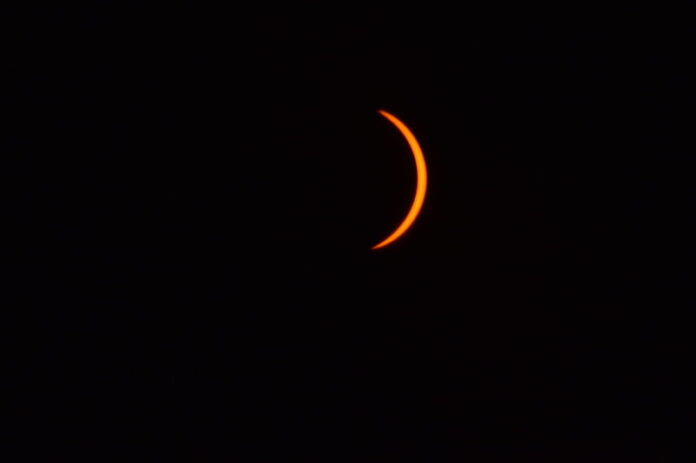Flowers closed and mosquitoes left hiding, only to be met with bats ready to devour them. Hippos came out of the water to grace, taking advantage of the cool darkness.
This scene lasted for a bit, then the light came back to the hill and the animals returned to their diurnal routines. This is what Jan Cami saw during the June 21, 2001, total solar eclipse on the border between Zambia and Zimbabwe. He was looking west to see the shadow of the moon racing towards them, then it became dark where they were a few seconds later.
“[Eclipses] are not so much interesting for the sciences but for the overall experience as human beings.”
Cami became an astrophysicist “by accident” after his father took him outside to look at the night sky when he was only five.
“The second time he took me outside after a few weeks, which to a five-year-old is an eternity, the stars were still there,” he remembered. “I was like, ‘Oh, that’s pretty cool!’ So already from a young age, I actually wanted to be an astronomer.”
He went on to study physics in his native country of Belgium and moved all around Europe and North America to follow his passion and work. He is now a professor of astrophysics at the University of Western Ontario and the director of the Hume Cronyn Memorial Observatory.
To him, the views of an eclipse go beyond the Moon obscuring the Sun. Observing how the sky changes colours, how light bounces off the trees, how the animals react to it — that is what makes an eclipse interesting.
The eclipse he saw in 2001 is only one of three he has seen in person. His first one took place on Aug. 11, 1999. He attended eclipse-watching parties along the path of totality with around 150 young astronomer enthusiasts. By contrast, he watched his third eclipse, the Great North American Eclipse in 2017, with only a few friends in the Wyoming prairies.
Before totality, when much of the Sun has been covered by the moon, he always notices that colours subtly shift, casting a magical hue. And when he glanced toward a nearby tree, he saw how the holes in the leaves created “small projections of this crescent sun.” The air grew cooler, embracing the impending darkness of the eclipse, and then in a minute, it all went back to light.
This won’t be his last eclipse. He and some fellow astronomers, whom he considers friends and family, will be travelling to Texas to see the upcoming eclipse on April 8. The trip will be long, but to see this celestial event, it’s totally worth it.
“A lot of people that are just outside the path of totality say ‘Oh, for me 99.6 per cent is good enough.’ But that 99.6 per cent of totality is not 99.6 per cent of the experience,” he said. “It’s that last ray of sunlight that’s being blocked by the moon that makes all the difference.”

